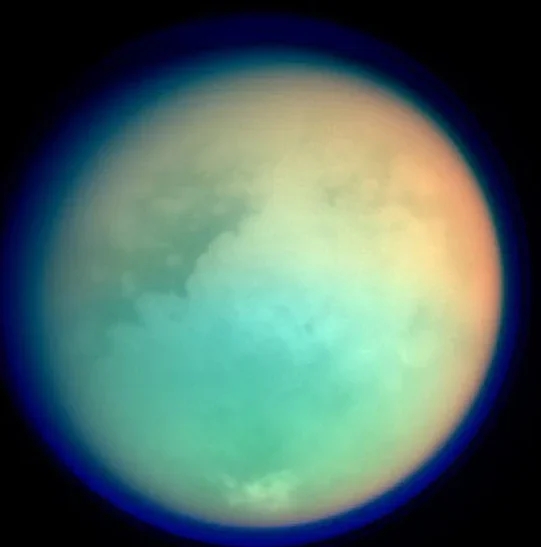
One of the most fascinating things that I have learned from this unit was the diversity that are the jovian moons. Originally, I believed moons to be rocky, non geologically active objects that orbited planets. Although this is the case for some moons, especially the smaller ones, some moons hold very unique characteristics, such as Titan. Something that stood out to me from Titan was its atmosphere. It is very uncommon for moons to have a substantial atmosphere. However, that is not the case for Titan. From the picture above, it is evident that titan has a very thick atmosphere. Interestingly, Titan’s atmosphere contains around 95% of molecular nitrogen, which is a lot! Not only is this a lot of nitrogen , but this number holds similarities to Earth’s atmosphere, where our planet holds around 77% of nitrogen. One big difference between the two is that earth has oxygen and Titan does not. Additionally, Titan’s atmosphere holds other complex molecules such as ethane, methane, and argon. Firstly, these gases make up Titan’s atmosphere due to gases vaporizing from the surface of this moon. Once the gas enters the atmosphere, ultraviolet light breaks down these molecules, so that hydrogen is able to thermally escape the atmosphere of Titan, leaving nitrogen, methane, and ethane in the atmosphere. For this moon, ethane and methane play a very interesting role, which is unlike anything seen from other moons. The ethane and methane are greenhouse gases, that in the right conditions, have the ability to rain down onto the surface of the moon. This liquid ethane and methane can then flow on the moon’s surface. This was such an interesting thing to learn because the ethane and methane cycle is similar to what is seen with the water cycle on Earth. This finding was established after observing polar storms, especially near the northern pole. The convection of warm air rising ultimately cause ethane and methane to rain down onto the surface of the moon. Although it is not water that is raining down, the ability to have a similar cycle to Earth is astonishing and it raises questions as to the possibility of life on Titan. Although it could be possible to have life, Titan’s temperature is so low and has a lack of surface liquid water (possibility of subsurface ocean), that this idea is not likely. However, I think this moon was one of the most incredible moons I have learned because of its striking similarity to the atmosphere and cycles on our home planet, Earth!
Leave a comment